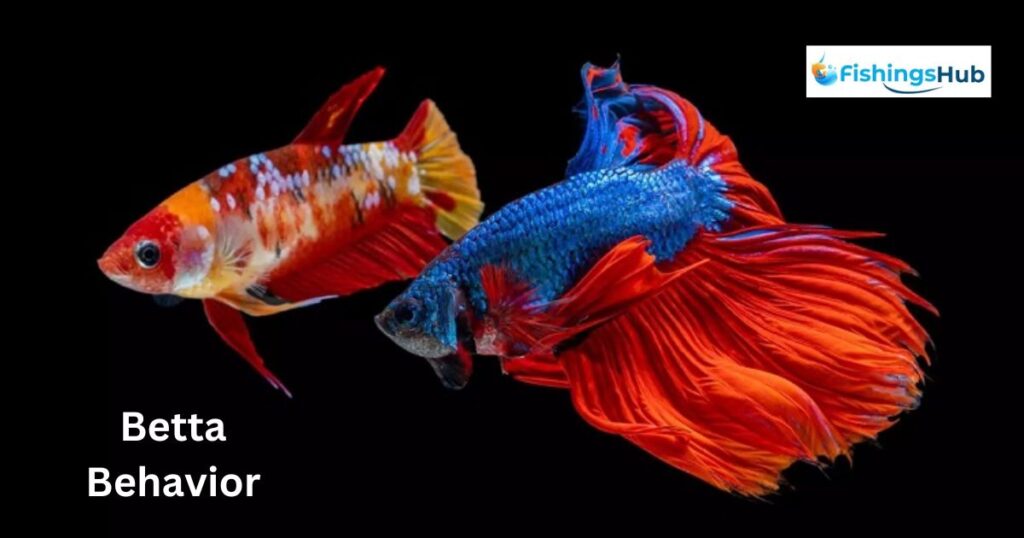Betta fish, also known as Siamese fighting fish, are beautiful creatures. While they can be peaceful, male bettas sometimes fight, especially when there’s a female around. If you’re thinking of letting them meet, it’s essential to know how long they should be together to stay safe and happy.
Have you ever wondered how betta fish feel about meeting new friends? Especially if it’s a lady betta? Let’s dive into the world of these colorful fish and discover the right time they should spend together.
Betta fish are unique because they can breathe air from above the water. But when it comes to male and female bettas meeting, things can get a bit tricky. It’s like introducing two characters in a story, and we want to make sure they get along well. Knowing how long they should be together can help keep them both calm and content.
Betta Behavior

Before delving into the breeding process, it’s crucial to understand the natural behavior of bettas. Male bettas are notorious for their territorial and aggressive tendencies, especially towards other males. In contrast, female bettas can also be territorial but are generally less aggressive than their male counterparts. Recognizing these behavioral traits is essential for a successful breeding attempt.
Setting The Stage For Breeding
- Selecting Healthy Bettas: Breeding healthy bettas is the foundation for a successful mating process. Choose fish that exhibit vibrant colors, have no signs of illness, and are of appropriate breeding age (usually around 4-6 months).
- Properly Sized Breeding Tank: Invest in a suitable breeding tank. A tank size of at least 10 gallons is recommended, providing enough space for the bettas and allowing the introduction of dividers if needed.
- Creating Ideal Water Conditions: Maintain optimal water parameters, including a temperature range of 78-80°F (25-27°C), a slightly acidic to neutral pH (6.5-7.0), and pristine water quality. Regular water changes and the use of a good water conditioner are crucial.
Introduction Of Female To Male
- Observation Period (1-2 Days): Start by placing the female betta in a separate container within the breeding tank. This allows the male and female to see each other without direct contact. Observe their behavior during this period.
- Release and Monitor Interaction (15-30 Minutes): After the observation period, release the female into the tank and closely monitor their interaction. Be prepared to intervene if aggression becomes excessive, as some chasing is normal during the initial stages.
- Signs of Compatibility: Watch for signs of compatibility, such as the male building a bubble nest and the female displaying receptive behavior (vertical stripes on her body). These indicators suggest that the bettas are ready to mate.
Breeding Process

- Spawning (24-48 Hours): Once signs of compatibility are evident, the male will lead the female to the bubble nest for spawning. The actual spawning process lasts a relatively short time, typically between 24 to 48 hours.
- Separation after Spawning: After spawning, it’s crucial to separate the female from the male to prevent aggression. The male will guard the nest and eggs, and the female may become a target if left together.
Post-Spawning Care
- Male’s Role in Parenting: The male betta plays a crucial role in parenting. He guards the eggs and, later, the fry (baby bettas) once they hatch. The female should be kept separate to avoid any risk of aggression towards the vulnerable fry.
- Feeding and Growth of Fry: Feed the fry with specialized fry food or finely crushed flakes. As they grow, gradually introduce larger food options. Maintaining pristine water conditions is essential for the health and development of the fry.
How To Tell If Male Betta Likes Female?

Determining if a male betta likes a female involves observing their behavior and interactions. Here are key signs to look for:
- Flaring: If the male flares his fins and gills when near the female, it’s a sign of attraction. Flaring is a display of dominance and an attempt to impress the female.
- Bubble Nest Building: Male bettas build bubble nests as a courtship behavior. If he creates a nest at the water’s surface, it indicates that he’s ready to mate.
- Color Changes: A male betta may intensify his colors when in the presence of a female. Bright, vibrant colors are a positive sign of attraction and courtship.
- Dancing or Zigzagging: The male may engage in a dance or zigzagging behavior to capture the female’s attention. This is a courtship display meant to impress and woo the female.
- Vertical Stripes on Female: If the female displays vertical stripes on her body, it indicates receptivity to mating. These stripes are a sign that she is ready to spawn.
- Following and Nudging: If the male follows the female closely and gently nudges her, it’s a clear indication of his interest and desire to mate.
- Non-aggressive Behavior: Unlike aggressive behaviors, such as fin nipping, if the male exhibits calm and non-threatening behavior in the female’s presence, it suggests positive interest.
It’s important to note that while these signs indicate potential interest, individual bettas may vary in their behavior. Additionally, not all male-female pairings will result in successful mating. Always closely monitor their interactions and be prepared to separate them if aggression becomes excessive to prevent injury to either fish.
FAQ’s
When should I remove female betta?
After the female lays eggs, promptly separate her. Allow the male to care for the eggs and fry until they become free-swimming. Later, remove the male for the safe raising of the fry.
Why is my male betta attacking the female?
During courtship, the male often engages in chasing and asserting dominance over the female. Despite apparent friendliness, providing hiding spots is essential for her well-being.
How do I stop my female betta from fighting?
If you notice aggression among female bettas housed together, it’s crucial to separate the aggressive fish. “Fin rot” is a prevalent issue in bettas due to their lengthy fins, leading to fraying.
Are female bettas friendly?
Starting with the advantages: Female bettas, being generally less aggressive than males, can thrive together in a well-planted, spacious tank. A group of females fosters a dynamic and engaging social environment.
How do you calm an aggressive female betta?
Create hiding places: Introduce plants, decorations, or caves in the tank to offer shelter for bettas, minimizing direct confrontations. Rearrange tank decor periodically to disrupt territories and lower aggression levels.
Final Thoughts
How Long To Leave Female Betta With Male? Successfully breeding bettas requires careful consideration of their natural behaviors and providing optimal conditions for the mating process. While the initial introduction of the female to the male involves close observation, the separation post-spawning is equally crucial to ensure the well-being of both the female and the developing fry.
By following these guidelines, hobbyists can enhance their chances of a successful betta breeding experience. Remember that every betta pairing is unique, and close monitoring is key to adapting the approach based on the behavior of the individual fish involved.

